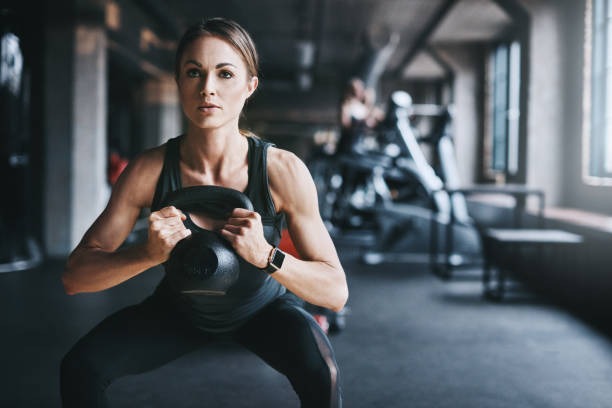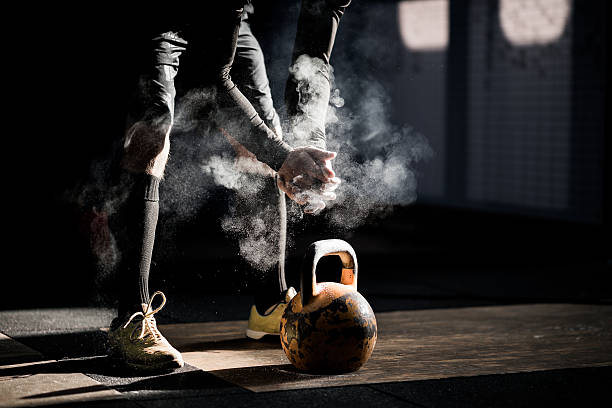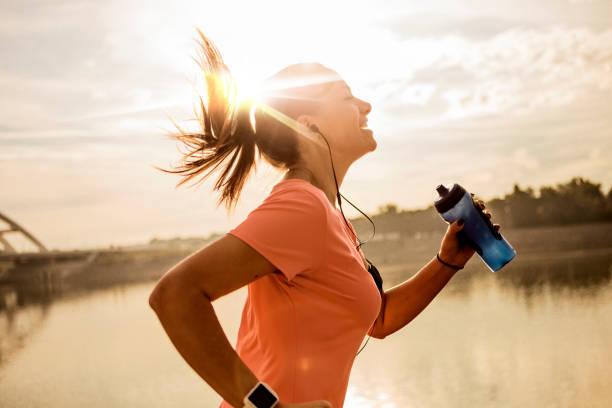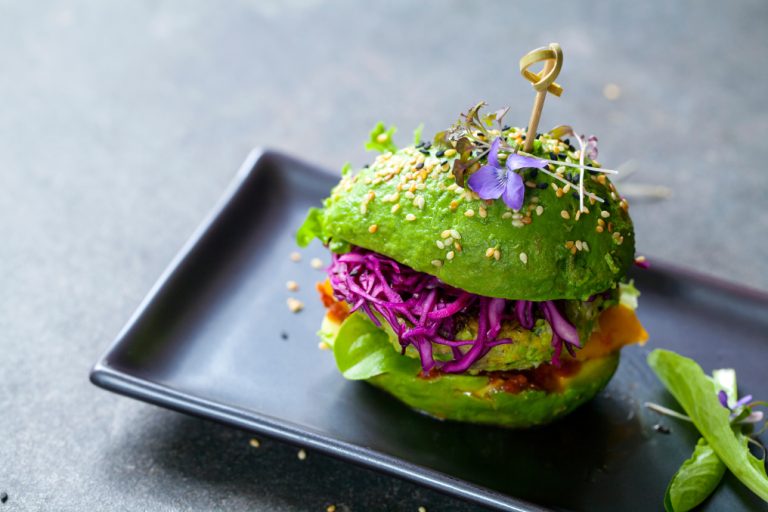Vegan Sports Nutrition: Is It A Good Idea? And if so, what should you pay attention to? Our author gives an overview of what is known on the subject and has answers to the most important questions.
Vegan nutrition has become a real trend in recent years – also among athletes: the list of well-known vegan athletes is getting longer every year. The boxer Mike Tyson, the Formula 1 driver Lewis Hamilton and the runner Ruth Heidrich swear by the vegan diet. Their argument: higher performance could be achieved through the vegan diet. But is that really true? And what should you consider if you eat vegan and do sports?
This is what experts say about sport and vegan nutrition

Individual athletes achieve great success with the vegan diet – but that’s why it’s far from being transferrable to everyone. Because of course athletes differ greatly from each other depending on the sport, training and physical characteristics. If you ask the German Society for Nutrition (DGE) for an assessment of the topic, you end up with a position paper from 2019 that says:
“Whether a vegan diet increases the risk of nutrient deficiencies or is associated with health and/or performance-promoting or inhibiting effects cannot currently be assessed due to the low prevalence of vegan competitive athletes and insufficient studies.”
The DGE therefore finds that we do not yet know enough about it and therefore does not clearly speak out for or against vegan sports nutrition.
The ecotrophologist Uwe Schröder from the Institute for Sports Nutrition takes a similar view: “Whether veganism influences performance in sports – positively or negatively – has not (yet) been clarified from a purely scientific point of view. While some nutrition experts warn against a vegan diet in competitive sports, top athletes who live vegan prove that world-class performances are possible even without animal products.” But he also points out:
“Outstanding results of individual vegans are not proof of the superiority of veganism as a sports nutrition.”
Markus Keller, Head of the Research Institute for Plant-Based Nutrition (IFPE), also agrees with this assessment: In the few studies on the subject, “neither advantages nor disadvantages of a vegan (sports) diet were shown compared to a mixed diet, for example on performance and Regeneration.”
So while, according to experts, there is nothing wrong with eating vegan as an athlete, the increased performance that some athletes report has not yet been scientifically proven. But what are the arguments for or against vegan sports nutrition?
Benefits of vegan sports nutrition
Nutrition – whether vegan or not – is extremely important for all athletes: it influences physical and mental performance. With food we absorb energy from fats and carbohydrates, proteins and important micronutrients such as vitamins, minerals and phytochemicals. But many foods also contain ingredients that do us more harm than good – in particular (processed) animal products usually do worse than plant-based products. A vegan diet, on the other hand, has health benefits:
The high proportion of plant-based foods can reduce the risk of cardiovascular disease, elevated LDL cholesterol, elevated blood pressure, type II diabetes and some types of cancer.
A balanced vegan diet contains a high proportion of antioxidants, vitamins – especially vitamins C and E – and a variety of slowly available carbohydrates. These nutrients can provide performance benefits as they can support training, adaptation and recovery processes.
A vegan diet – especially among athletes – is often also associated with other health-promoting behaviors: Conscious nutrition, non-smoking, low alcohol consumption, higher physical activity.
Disadvantages of vegan sports nutrition
In addition to the advantages of plant-based sports nutrition, there is also a difficulty: “It can be disadvantageous that with a vegan diet in general and also in sports you have to pay more attention to the supply of potentially critical nutrients,” says Donalies. Due to the limited choice of food, vegan athletes have a higher risk of being undersupplied with certain nutrients. Nutrient deficiencies can impair performance and, in the worst case, even endanger your health.
Vegan athletes should therefore keep an eye on their supply of proteins, vitamins B12 and B1, B2 and B3, iron, zinc, calcium, iodine, selenium, vitamin D and the long-chain n-3 fatty acids EPA and DHA.
Schröder from the Institute for Sports Nutrition also sees the increased risk of nutrient deficiencies. “Through targeted food selection and combinations, supported by appropriate food supplements, this task can also be easily solved by people who are physically active.”
Fluid intake
The following applies to all athletes: Sufficient drinking is important for health and performance – but the fluid requirement is individual and can vary greatly. Therefore: pay attention to your body.
Tip: Your sense of thirst and the color of your urine are helpful for orientation – if you have a balanced fluid balance, it should be light yellow. In the case of prolonged physical activity (more than 1.5 hours), it is also advisable to use carbohydrate and sodium-containing drinks.
Energy balance in vegan sports nutrition
If you do a lot of sport, you need a lot of energy. However, the individual energy requirement varies: It is influenced by the duration, intensity and phase of training, the type of sport, body size, body weight, body composition and age. That’s why there are no general recommendations – but you can calculate your individual energy requirements.
A negative energy balance can endanger health: in the long term it increases the risk of low bone density, in the medium term the immune system suffers. In addition, there can be a loss of muscle mass and a poorer adaptation to training stimuli. If you want to do sports in a healthy and efficient way, you should definitely ensure that you have an energy supply that is adapted to your own needs.
Vegan athletes in particular should keep an eye on their energy balance. Although plant-based foods have a high nutrient density, they also have a low energy density, and the high fiber content also causes saturation quickly. This can help with weight loss, but for performance-oriented athletes it can have a negative effect on the adaptation processes in everyday training.
Tip: Vegan athletes should make sure to eat small but high-energy meals more frequently during phases with high training loads: foods such as nuts, seeds and high-quality vegetable oils are good sources of energy for in between meals.
Proteins

Proteins are an important and controversial topic among athletes: the body needs proteins to build muscles, tendons, ligaments and bones, to regulate metabolic processes and for the endocrine system. An individually adapted protein intake can support the training process and make the body more efficient. However, that doesn’t mean that a lot of protein helps a lot. Rather, it also depends on the quality, the source and the amino acid composition.
In vegan sports nutrition, one of the nutrients they tend to be deficient in is protein. In addition, plant-based protein sources often lack important essential amino acids.
Tip: Vegan athletes should pay attention to the amount and quality of their protein intake: A combination of many different vegetable protein sources – different types of grain, legumes, nuts and seeds – increases the overall chance of achieving a high biological value. Good combinations are, for example, wholemeal bread with peanut butter or chickpea cream and oatmeal with almond milk. However, if the protein intake is not covered by food, vegan athletes can also use protein supplements made from soy, peas, rice or hemp.
Fats
Fats play a rather subordinate role in sports nutrition. Experts recommend that fat intake in athletes should be between 20 and 30 percent of total energy intake. Fat intake is usually slightly lower for vegans, but the same recommendation applies. It can be achieved, for example, by consuming high-quality oils, nuts, and seeds.
The problem, however, is the supply of the omega-3 fatty acids eicosapentaenoic acid (EPA) and docosahexaenoic acid (DHA): They are mainly found in various types of fish and have a positive effect on the so-called heart rate variability and thus on performance in endurance sports. At the same time, vegans tend to consume too many pro-inflammatory omega-6 fatty acids.
Tip: Vegan athletes should consciously avoid omega-6-rich oils such as sunflower and corn oil and increase the consumption of omega-3-rich foods such as flaxseed, walnuts and chia seeds. In addition, the supplementation of microalgae oil is recommended, it is rich in DHA and EPA and, unlike commercially available fish oil products, is vegan.
Carbohydrates
Carbohydrates are important sources of energy in sports nutrition. The vegan diet usually contains a lot of high-quality carbohydrates, so that the requirement is well covered. In order to cover the high protein requirement at the same time, vegan athletes should eat legumes and grains every day.
However, you should be careful with the fiber content, as fiber supports the unwanted and long-lasting satiety. In addition, many vegetable carbohydrate suppliers contain substances such as lecithin, resistant starch and indigestible carbohydrates that can lead to gastrointestinal problems.
Tip: For a sufficient intake of carbohydrates, high-carbohydrate and low-fiber meals such as rice, pasta and buckwheat are a good choice. Fruit juices are a good source of liquid carbohydrates.
Minerals and vitamins
For all athletes, an adequate supply of minerals and vitamins is crucial for health and performance. Depending on the type of sport, the intensity and scope of the training, and depending on individual factors, the need and risk of nutrient deficiencies differs. There are some minerals and vitamins in a vegan diet that you should keep in mind:
The main source of vitamin B12 is animal products, so vegans should take vitamin B12 supplements to meet their needs. For athletes, vitamin B12 plays an important role in adaptation and regeneration processes, so it makes sense to have the vitamin B12 level checked and monitored regularly.
Athletes can have a higher need for vitamins B1, B2 and B3 due to the increased energy consumption. Good vegan sources include whole grains, legumes, nutritional yeast, mushrooms, kale, broccoli, or nuts.
Exercise can increase iron requirements. In addition, the supply of vegans with iron can be critical in principle. As a vegan athlete you should make sure you get enough legumes, nuts, seeds, whole grains and vegetables such as spinach or beetroot – especially as a woman.
Vegans should generally pay attention to their intake of zinc. Athletes may have a higher need. Zinc is involved in protein metabolism, the development and maturation of cells and thus in regeneration. Foods containing zinc include whole grain products, oatmeal, lentils, oilseeds and nuts.
The supply of calcium is on average worse for vegans – which can be particularly problematic for physically active children and adolescents. They have a higher calcium requirement due to growth and at the same time lose calcium through sweat. Vegan sources of calcium include vegetables such as broccoli and kale, nuts, legumes, tofu, and mineral water.
Iodine is involved in the regulation of the entire energy metabolism and is therefore important for athletes. At the same time, iodine is essential for the thyroid gland. However, both too much and too little iodine intake have a negative effect on the thyroid gland. It is therefore important to ensure a balanced iodine balance. Vegans can absorb iodine through iodized salt.
Selenium is important for the immune system and muscle function. It is found in cabbages, onion vegetables, mushrooms, asparagus and legumes.
Like many people, vegan athletes are often not sufficiently supplied with vitamin D. Therefore, supplementing with vitamin D can be useful – but only on medical advice. As a vegan, you should make sure that you choose a vegan dietary supplement.
Conclusion: Vegan diet and sport – an individual decision

There are competitive athletes who are very successful with a vegan diet. However, one cannot assume a general performance advantage (or disadvantage) through the vegan diet. There is not enough scientific research to make a conclusive assessment. A high proportion of plant-based foods is clearly an advantage of vegan (sports) nutrition due to the high nutrient content and a reduction in the risk of certain diseases. At the same time, the vegan diet increases the risk of nutrient deficiencies.
For this reason, the question of whether a vegan diet is suitable for you as an athlete can only be answered individually. As a vegan athlete, you should definitely inform yourself sufficiently and plan your diet well – if you are unsure, you should seek qualified advice.
















